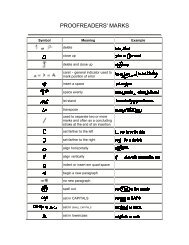View - Martin Kröger - ETH Zürich
View - Martin Kröger - ETH Zürich
View - Martin Kröger - ETH Zürich
Create successful ePaper yourself
Turn your PDF publications into a flip-book with our unique Google optimized e-Paper software.
THERMODYNAMICALLY ADMISSIBLE REPTATION MODEL<br />
1295<br />
interval between the two applied step strains is much larger than a characteristic time s ,<br />
called the retraction time. Marrucci 1986 and Marrucci and Grizzuti 1986 also showed<br />
that the model without IA predicts the Weissenberg effect correctly. In an attempt to find<br />
a thermodynamically admissible formulation, the reptation model without IA has been<br />
reformulated by Öttinger and Beris 1999 in the general equation for the nonequilibrium<br />
reversible-irreversible coupling GENERIC formalism of nonequilibrium thermodynamics<br />
Grmela and Öttinger 1997; Öttinger and Grmela 1997. For a comprehensive<br />
introduction see Öttinger 1999a. The model has been shown to be thermodynamically<br />
consistent after modifying the production term and introducing an additional term in the<br />
extra stress tensor. A consistent model with a uniform monomer distribution along the<br />
chain was proposed by Öttinger 1999b.<br />
B. Double reptation<br />
Tsenoglou 1987 and des Cloizeaux 1988 derived a successful mixing rule for<br />
polydisperse melts based on the idea of ‘‘double reptation,’’ which represents the relaxation<br />
mechanism for the tube that does not arise from motion of the probe chain, but<br />
rather motion from the surrounding chains. Öttinger 1994 has considered a reptation<br />
model in which this additional constraint release mechanism is mimicked through a noise<br />
term in the time-evolution equation for the orientation of inner chain segments. By doing<br />
so, he recovered the correct mixing rule in the linear regime and extended the idea to the<br />
nonlinear regime. But, the prescribed relaxation spectrum is not fully recovered due to<br />
the lack of contour-length fluctuations in the model. The model predicts an improved<br />
power-law index of 4/3 for the steady-state viscosity in shear flow instead of 3/2 for<br />
the DE model. Accordingly, the shear stress versus shear rate curve still exhibits a<br />
maximum when only double reptation is considered.<br />
C. Chain stretching<br />
Marrucci and Grizzuti 1988 extended the DE model to allow for chain stretching and<br />
predicted steady-state properties. An effect is predicted to result in elongational flows,<br />
giving rise to an expected upturn of the elongational viscosity, but surprisingly, there is<br />
no effect for steady shear flows, in particular, the extended model does not improve the<br />
quality of the model prediction for the power-law index of the steady-state shear viscosity.<br />
Later, Pearson et al. 1991 studied the same type of model with chain stretching in<br />
transient situations. They found that both the shear stress and the first normal stress<br />
difference overshoot in the startup of steady shearing flows and the times required to<br />
reach these maxima are independent of the shear rate. Mead and Leal 1995 and Mead<br />
et al. 1995 presented a comprehensive study of the DE model by including chain<br />
stretching and a nonlinear finitely extensible spring law. Numerical predictions were<br />
given for steady two-dimensional flows with a continuously varying degree of extensional<br />
and shear character. The results revealed that significant steady state stretch is<br />
predicted as the flow becomes increasingly extensional in character.<br />
Although chain stretching is important for correcting some of the failings such as an<br />
overshoot in N 1 , it doesn’t solve a long-standing problem in the DE model, namely, the<br />
excessive shear thinning of the viscosity at high shear rates associated with a maximum<br />
in shear stress followed by a region in which shear stress decreases with shear rate<br />
asymptotically as ˙ 0.5 , which leads to constitutive instabilities in shear flow. The<br />
reason for this problem is that, in fast shear flow, the model predicts that the tube<br />
segments become highly oriented in the flow direction and hence present a very slim





